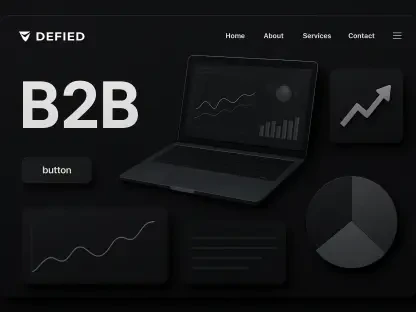Introduction
In the thick of the holiday season, when shopping frenzies hit their peak around Black Friday and Cyber Monday, email inboxes become battlegrounds for marketers striving to capture attention. With email volumes often doubling or tripling during this period, mailbox providers like Gmail and Yahoo tighten their spam filters, making it tougher for even legitimate messages to land in the intended inbox. This heightened scrutiny poses a significant challenge for businesses aiming to connect with customers during a critical sales window.
The purpose of this FAQ article is to provide clear, actionable guidance on navigating the complexities of holiday email deliverability. By addressing common questions and concerns, the content aims to equip marketers with expert strategies to enhance inbox placement. Readers can expect to explore four practical tips, backed by insights and best practices, to ensure their campaigns stand out amidst the seasonal email surge.
This article breaks down the essentials of email deliverability, from understanding its core components to monitoring key metrics. Each section tackles a specific aspect of the process, offering solutions to common pitfalls. By the end, a comprehensive understanding of how to optimize holiday email performance will be within reach.
Key Questions on Holiday Email Deliverability
Why Are Email Delivery Scores So Low During the Holidays?
During peak shopping events, the sheer volume of emails sent skyrockets, pushing mailbox providers to implement stricter spam filters to protect users from unwanted content. This seasonal spike often catches legitimate senders off guard, as their messages face increased scrutiny. The risk of being flagged as spam or rejected outright becomes a pressing concern for marketers who rely on email to drive holiday sales.
Several factors contribute to declining delivery scores, including poor sender reputation, lack of authentication, and low user engagement. Mailbox providers assess each email based on these criteria, and any red flags can result in a message being diverted to the spam folder or bounced entirely. For instance, sending to outdated lists or ignoring unsubscribe requests can signal unreliability to providers.
To counteract this, marketers must prioritize consistent sending practices and maintain clean, engaged subscriber lists. Understanding that holiday periods demand extra vigilance is key to avoiding the common traps that lead to low delivery rates. Proactive steps, such as authenticating domains and focusing on relevant content, can make a significant difference in reaching the inbox.
What Is Email Deliverability and What Determines It?
Email deliverability refers to the ability of a sent message to successfully reach a recipient’s inbox rather than being rejected or filtered as spam. This process is crucial for ensuring that marketing efforts during high-stakes periods like the holidays achieve their intended impact. Without strong deliverability, even the most compelling campaigns can fail to connect with audiences.
The journey of an email involves two main stages: delivery and inbox placement. In the delivery phase, the email is sent to a mailbox provider, such as Outlook or Gmail, where it is either accepted or rejected due to issues like invalid addresses (hard bounces) or temporary problems (soft bounces). If accepted, the provider then determines placement—whether the email lands in the primary inbox, a promotions tab, or the spam folder—based on factors like sender reputation and engagement history.
Key elements influencing this outcome include proper authentication protocols, consistent user interaction with emails, and the sender’s overall trustworthiness. Mailbox providers use sophisticated algorithms to make these decisions, often intensifying their filters during high-traffic holiday seasons. Marketers who grasp these mechanics can better position their emails for success by aligning with provider expectations and avoiding common missteps.
How Can a Strong Sender Reputation Be Built and Maintained?
Sender reputation acts as a critical gatekeeper in the eyes of mailbox providers, distinguishing trusted communications from potential spam. This reputation is shaped by audience engagement metrics, such as open and click rates, as well as how recipients interact with emails—whether they save them, delete them unread, or mark them as spam. A solid reputation ensures better inbox placement, especially during the competitive holiday rush.
List quality plays an equally vital role in this equation. Ensuring subscribers have explicitly opted in and maintaining relevance through targeted content helps build trust. For holiday campaigns, introducing new sign-ups via a compliant opt-in process, followed by a well-structured welcome automation, sets clear expectations and fosters positive engagement from the start.
To sustain a strong reputation, it’s essential to re-engage inactive subscribers well before the holiday peak and remove unresponsive contacts if efforts fail. Honoring unsubscribe requests promptly also demonstrates respect for user preferences. These practices prevent sudden drops in reputation that could jeopardize deliverability when email traffic surges, ensuring campaigns consistently reach their targets.
How Can Overloading an Email Program Be Avoided During the Holidays?
The temptation to ramp up email frequency and reach broader audiences during the holiday season is strong, but abrupt changes in sending behavior can trigger spam filters. Mailbox providers closely monitor patterns, and a sudden spike in volume or a shift to untested segments can signal suspicious activity. Such missteps risk undoing months of carefully built trust with providers.
Instead, maintaining a steady sending cadence and testing new audience segments early in the season helps avoid red flags. Using clear, bot-protected signup forms and offering preference options allows subscribers to adjust their engagement level without fully opting out. These measures ensure that communications remain predictable and aligned with provider expectations.
Avoiding common pitfalls is just as important—sending to outdated or inactive lists or switching sending domains late in the year can harm deliverability. Ignoring warning signs like declining open rates or rising complaint numbers further compounds the issue. A balanced approach, focusing on consistency and relevance, keeps an email program effective without overwhelming filters or subscribers.
Why Is Monitoring Key Metrics Essential for Holiday Deliverability?
Even experienced marketers can encounter fluctuating deliverability metrics during the holiday season due to intensified provider scrutiny and heightened user activity. Keeping a close eye on performance indicators allows for early detection of issues before they spiral into larger problems. Metrics serve as a diagnostic tool, revealing where adjustments are needed to maintain inbox placement.
Critical metrics to track include bounce rates, with hard bounces above 2% signaling the need for immediate list cleaning. Complaint rates should ideally stay below 0.1% to avoid spam folder risks, while sudden spikes in opt-outs may indicate content or frequency issues. Additionally, monitoring open rates across domains like Gmail and Yahoo, alongside reputation signals from tools like Gmail Postmaster, provides a comprehensive view of sender health.
Mailbox providers increasingly rely on AI and machine learning to evaluate sender behavior and content quality, making authentic engagement more important than ever. Regularly reviewing these metrics ensures that holiday campaigns remain on track, adapting swiftly to any anomalies. This vigilance helps safeguard deliverability when competition for inbox space is fiercest.
Summary of Key Insights
This FAQ compiles essential strategies for boosting holiday email deliverability, addressing core concerns like low delivery scores, sender reputation, program balance, and metric monitoring. Each question highlights a unique facet of the challenge, offering practical solutions to navigate the intensified email landscape during peak seasons. The insights emphasize proactive planning and consistent practices as the foundation for success.
Key takeaways include the importance of understanding deliverability mechanics, building trust with mailbox providers through strong reputation management, avoiding sudden program changes, and staying vigilant with performance metrics. These steps collectively ensure that marketing emails stand a better chance of reaching subscribers when it matters most. For marketers, applying these principles translates to improved engagement and holiday campaign results.
For those seeking deeper knowledge, exploring resources on email list building, engagement best practices, and marketing benchmarks can provide additional tools to refine strategies. Comprehensive guides and data-driven insights from trusted platforms offer valuable support in mastering the intricacies of inbox placement. Continuous learning remains a vital component of sustained email success.
Final Thoughts
Reflecting on the challenges tackled, it becomes evident that holiday email deliverability demands meticulous attention to detail and strategic foresight. The hurdles of heightened spam filters and soaring email volumes are navigated through expert tips that prioritize trust and consistency. Each step taken underscores the value of preparation in a highly competitive digital space.
Looking ahead, marketers are encouraged to integrate these lessons into their ongoing efforts, ensuring that every campaign reflects a commitment to subscriber respect and data-driven adjustments. A focus on building long-term relationships with audiences, rather than chasing short-term gains, emerges as a guiding principle. This mindset promises to elevate future holiday seasons with stronger connections and impactful results.









